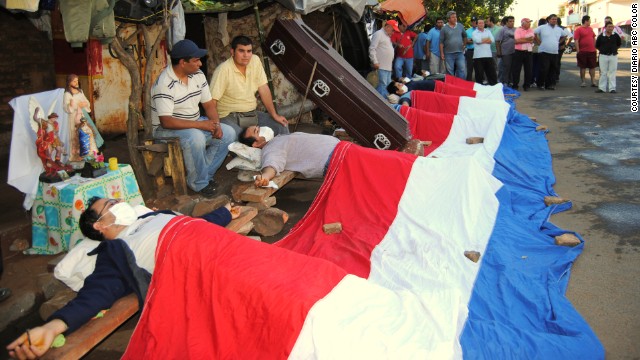By Ellis Cortez
Impunity Watch Reporter, South America
SANTIAGO, Chile – The Brigada Ramona Parra (BRP) is an artistic collective that focuses on painting murals. The BRP was founded in 1968 by a group of young Chilean communists. The group was named after Ramona Parra, a nineteen-year old woman who was shot dead by Chilean police during a protest in the capital city of Santiago in 1946.

Inspired by the revolutionary essence of the late 1960s, the members of the BRP would head out to paint in the streets of Santiago. They saw murals as a way of brightening up the city’s walls and as a way to encourage radical social change.
In 1970, BRP propaganda helped launch the Socialist presidential candidate, Salvador Allende, into power. However, in 1973 their movement suffered a huge blow. General Augusto Pinochet seized power in a military coup and the Communist Party was outlawed.
As the coup unfolded, the BRP split. Several young communists wanted to take on the military in open combat while others thought it was too dangerous. The BRP and thousands of other Chilean leftists went underground moving between safe houses to avoid detection, but continued to paint in defiance of the dictatorship. BRP activists were tortured and driven into exile, and the military government painted over their murals.
“We worked clandestinely,” says Juan Tralma, a founding member of the BRP. “It was impossible to paint big murals so we would just paint a simple letter R, ringed by a circle with a star next to it. The R stood for resistance, the circle was a sign of unity and the star a symbol of the BRP.”
Reflecting on the coup now, Mr. Tralma says the BRP was right to retreat rather than confront General Pinochet’s forces. “It was a powerful, brutal dictatorship,” he says. “It would have been a massacre. We would have sent kids out onto the streets with paint brushes to confront men with machine-guns.”
“We had to keep our eyes peeled all the time,” recalls Beto Pasten, another veteran member of the BRP. “The police could turn up at any moment. They’d come and kick over our paint pots, throw paint on our murals and arrest us. We’d do a mural at the weekend and by Monday they’d painted over it in black. Then the following week we’d come back and paint again, on top of their black paint.”
With the return to democracy in 1990, the BRP came out of hiding. Presently, the BRP still paints murals in Chile, supporting contemporary causes such as workers’ and indigenous rights and the campaign for education reform. Striking murals of the BRP can be found at the Gabriela Mistral Cultural Center, the main cultural center in Santiago, and at the headquarters of the Worker’s United Center of Chile, the country’s main trade union federation.
On September 11th, Chile will mark the 40th anniversary of Pinochet’s military coup.
For more information please see:
El Commercio – Los muralistas chilenos que desafiaron a Pinochet – 8 September 2013
MSN Latino – Los muralistas chilenos que desafiaron a Pinochet – 8 September 2013
BBC – The Chilean muralists who defied Pinochet – 5 September 2013


